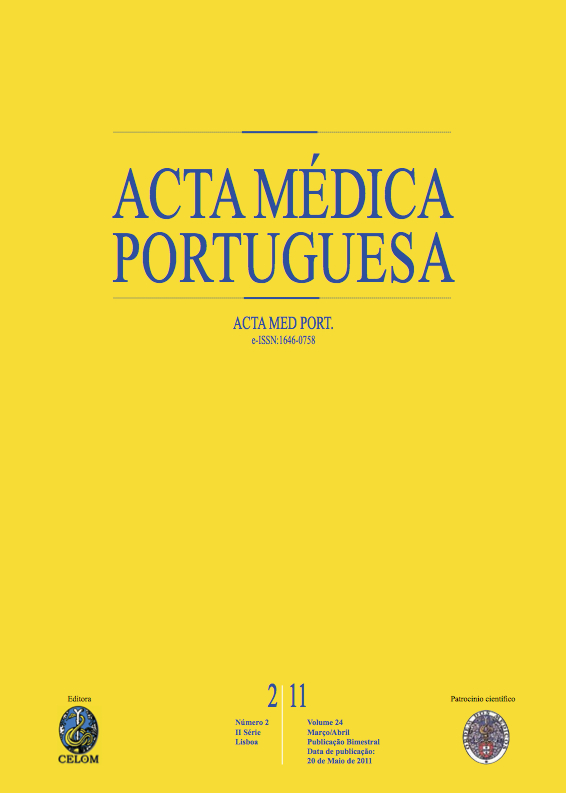Prevalence of overweight and obesity in Portuguese children and adolescents.
DOI:
https://doi.org/10.20344/amp.1621Abstract
In Portugal, there have been many studies on the prevalence of overweight and obesity in children and adolescents. However, because many of the studies are not submitted to publication in scientific journals, these results remain unknown.To obtain recent data on the prevalence of overweight and obesity in Portuguese children and adolescents.Database search of articles with peer-review, academic theses, websites and materials of scientific meetings on obesity; search terms included Portugal, overweight, obesity, children, and adolescents. We evaluated the procedure for collection of anthropometric data, and the year of data collection, considering only those studies that included evaluations since 2007. We rejected studies that: relied only on measures of self-declaration for the anthropometric assessment; did not present the date of assessment; or were performed on samples of small size (n < 100).We identified 21 studies and the criteria commonly used to estimate the prevalence rates were the CDC for children, and the IOTF in adolescents. Although the values are very different between studies, the frequency of overweight and obesity have reached very high values. The prevalence of overweight varied according to the criteria: the CDC, between 8.3% and 27.4% for males and 13.4% and 35% for females, the IOTF, between 8.6% and 29 6% for males and between 8.8% and 31.4% for females, the WHO, between 21.1% and 22.1% for males and between 19.7% and 31.3% for females. Prevalence of obesity varied: considering the CDC criteria, between 5.9% and 26% for males, and 6.1% and 21.3% for females; considering the IOTF, between 3.2% and 14.6% for males, and 0.6% and 13.1% for females; and considering the WHO criteria, between 4.4% and 22.9% for males, and 3.8% and 8.2% for females.The results confirm that overweight and obesity are a serious public health problem in Portuguese children and adolescents, and urgent measures are needed to suppress this epidemic and reverse the situation as soon as possible.Downloads
Downloads
How to Cite
Issue
Section
License
All the articles published in the AMP are open access and comply with the requirements of funding agencies or academic institutions. The AMP is governed by the terms of the Creative Commons ‘Attribution – Non-Commercial Use - (CC-BY-NC)’ license, regarding the use by third parties.
It is the author’s responsibility to obtain approval for the reproduction of figures, tables, etc. from other publications.
Upon acceptance of an article for publication, the authors will be asked to complete the ICMJE “Copyright Liability and Copyright Sharing Statement “(http://www.actamedicaportuguesa.com/info/AMP-NormasPublicacao.pdf) and the “Declaration of Potential Conflicts of Interest” (http:// www.icmje.org/conflicts-of-interest). An e-mail will be sent to the corresponding author to acknowledge receipt of the manuscript.
After publication, the authors are authorised to make their articles available in repositories of their institutions of origin, as long as they always mention where they were published and according to the Creative Commons license.









